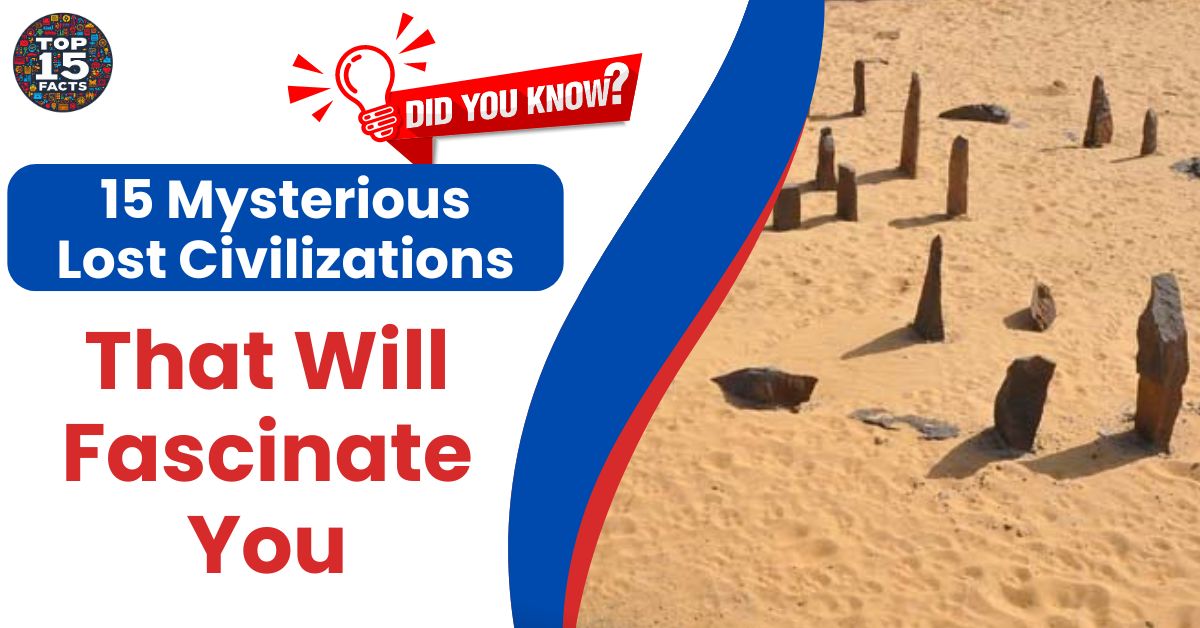Introduction
History is awash with stories of once-mighty civilizations that flourished and then faded into obscurity. From grand cities swallowed by jungles to empires erased from maps, these lost civilizations spark our imaginations. The reasons for their decline are often shrouded in mystery, with theories spanning natural disasters, warfare, climate change, and societal collapse. Join us as we delve into 15 of the most fascinating lost civilizations and the enduring puzzles they left behind.
15 Mysterious Lost Civilizations: One-Line Facts
- Atlantis: The legendary island nation described by Plato, submerged beneath the ocean.
- Maya: A sophisticated Mesoamerican civilization known for its pyramids, intricate calendar, and sudden decline.
- Indus Valley Civilization: A technologically advanced Bronze Age society in South Asia with an undeciphered script.
- Cahokia: North America’s largest pre-Columbian city, mysteriously abandoned centuries before European arrival.
- Minoans: A vibrant Aegean civilization centered on Crete, known for their art and possible downfall due to a volcanic eruption.
- Nabta Playa: An ancient African culture that predates the Egyptian pharaohs, known for their astronomical stone circle.
- Göbekli Tepe: A perplexing prehistoric site in Turkey with massive stone structures built over 11,000 years ago.
- Aksumite Empire: A powerful African kingdom strategically located on trade routes, famous for its towering obelisks.
- Roanoke Colony: The first English settlement in North America, whose inhabitants vanished without a trace.
- Vinland: A short-lived Norse settlement in North America, mentioned in Viking sagas.
- Khmer Empire: The builders of the magnificent Angkor Wat temple complex in Southeast Asia.
- Rapa Nui: The isolated inhabitants of Easter Island, renowned for their enigmatic moai statues.
- Thonis-Heracleion: A lost Egyptian city rediscovered submerged off the coast of Egypt.
- Mycenaean Greeks: A Bronze Age warrior culture that formed the backdrop of Homer’s epic poems.
- Dwaraka: An ancient Indian city mentioned in Hindu texts, believed to have been lost to the sea.
1. Atlantis

Plato’s tale of a technologically advanced island nation named Atlantis, swallowed by the ocean in a single day due to hubris, has captivated imaginations for centuries. While there’s no concrete evidence to prove its existence, the story has inspired countless myths and theories. The enduring fascination with Atlantis raises questions about the possibility of forgotten civilizations lost to natural cataclysms. Perhaps there were advanced cultures that thrived before recorded history, and their demise served as a cautionary tale for later societies.
2. Maya
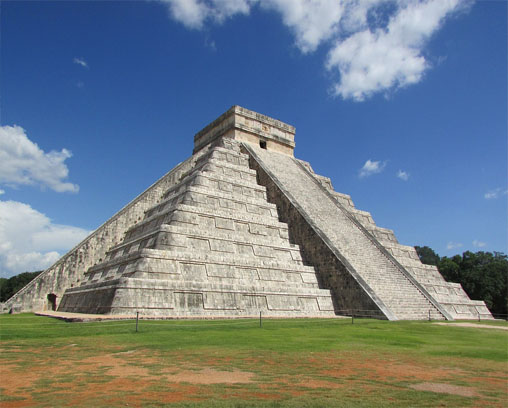
The Maya built a complex and sophisticated society in Central America, flourishing between 2000 BC and 900 AD. They are renowned for their towering pyramids, intricate calendar system that predicted astronomical events with remarkable accuracy, and a hieroglyphic writing system that is still being deciphered. Their advanced cities, like Chichen Itza and Tikal, housed impressive temples, palaces, and ball courts. The Maya mysteriously declined around 900 AD, with theories pointing to a combination of factors like drought, warfare, environmental degradation, and societal collapse. Their legacy continues to inspire awe for their ingenuity and cultural achievements.
3. Indus Valley Civilization
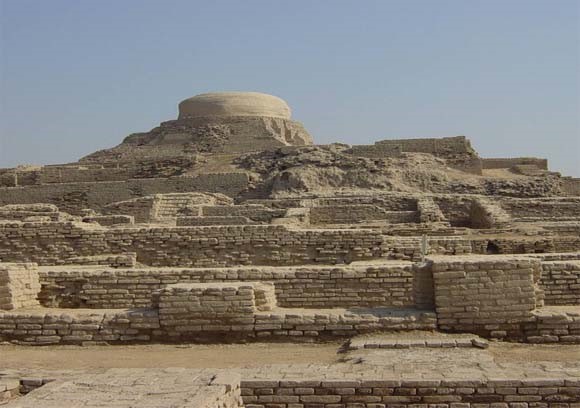
Thriving in the Indus Valley region (present-day Pakistan and northwestern India) between 3300 BC and 1300 BC, the Indus Valley Civilization was a highly developed Bronze Age society. They built well-planned cities like Mohenjo-daro and Harappa, featuring impressive brick structures, a well-developed drainage system, and even public baths. The Indus Valley people were skilled artisans, crafting intricate pottery, seals, and jewelry. However, one of the biggest mysteries surrounding this civilization is their writing system, a complex series of symbols yet to be deciphered. The reasons for their decline around 1800 BC remain unclear, with theories suggesting changing climate patterns, shifts in trade routes, or natural disasters as possible culprits.
Read More: 15 Mind-Blowing Facts About Medieval Times That Will Transport You Back in History
4. Cahokia
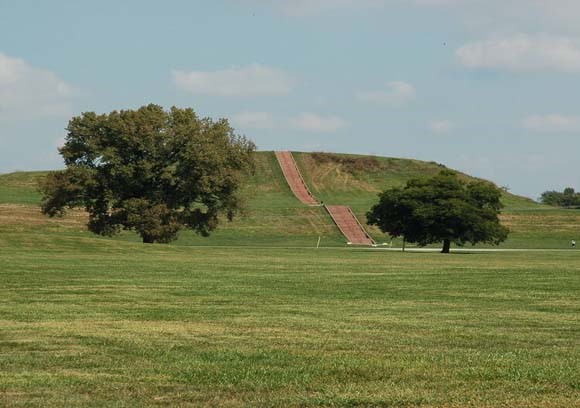
North America’s forgotten metropolis, Cahokia, located near present-day St. Louis, Missouri, thrived between 600 AD and 1400 AD. It was the largest pre-Columbian city north of Mexico, boasting monumental earthen structures, including Monks Mound, the largest prehistoric structure north of the Mesoamerican pyramids. Cahokia’s inhabitants were skilled farmers, traders, and artisans. The reasons for the city’s abandonment centuries before European arrival remain a mystery, with theories suggesting resource depletion, social unrest, or changes in the Mississippi River’s course playing a role.
5. Minoans
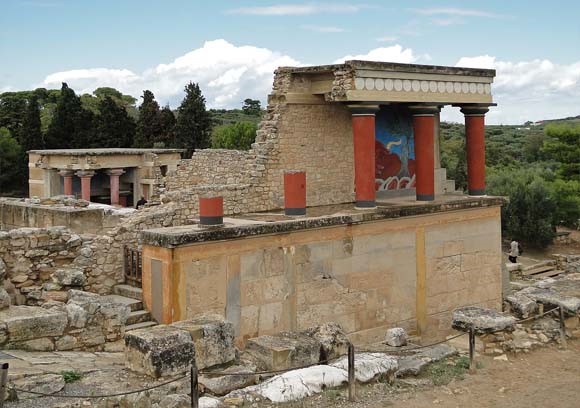
The Minoans were a vibrant Aegean civilization centered on the island of Crete, flourishing between 2700 BC and 1450 BC. Known for their elaborate palaces like Knossos and Phaistos, they were skilled seafarers, traders, and artists. Minoan frescoes depict lively scenes of daily life, athletic events, and religious rituals. The exact cause of their decline remains debated, with the volcanic eruption of Thera (modern-day Santorini) around 1600 BC being a leading theory. The eruption’s devastating effects may have disrupted trade routes, triggered tsunamis, and caused widespread destruction, contributing to the Minoans’ decline and paving the way for the rise of the Mycenaean Greeks.
6. Nabta Playa
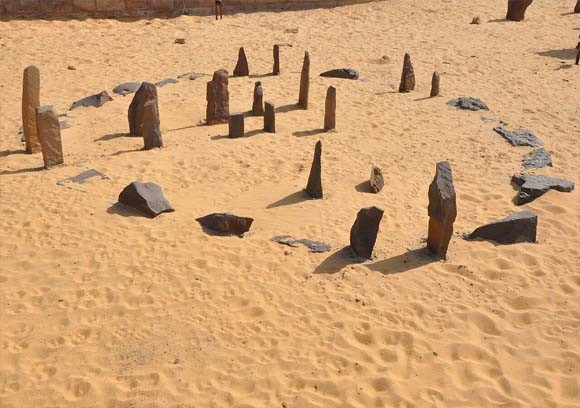
Image Source wikipedia
In the harsh desert of southern Egypt lies an intriguing site from a nomadic culture that emerged around 11,000 years ago. Nabta Playa, a prehistoric settlement, surprised modern archaeologists and astronomers with the discovery of a stone circle predating Stonehenge by thousands of years. This circle is thought to have astronomical functions, suggesting sophisticated knowledge possessed by these early people. Reasons for their disappearance remain uncertain, but a changing climate likely made the region too arid around 5000 years ago, forcing them to disperse in search of more favorable conditions.
Read More: 15 Legendary Lost Treasures: Fact, Fiction, and the Hunt Continues
7. Göbekli Tepe
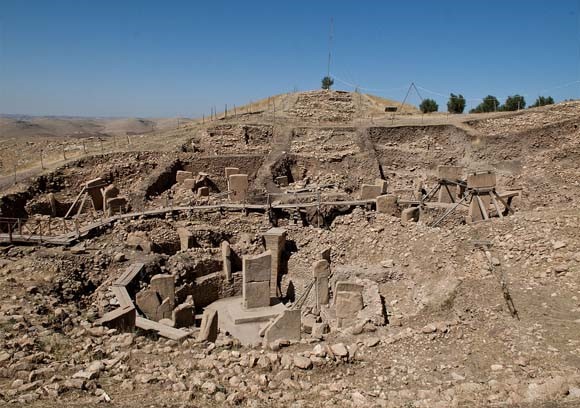
This perplexing prehistoric site in modern-day Turkey challenges conventional notions about early human societies. It features massive, intricately carved stone structures, including T-shaped pillars and circular enclosures dating back to between 12,000 BC to 10,000 BC, a time when hunter-gatherer societies were thought to be the dominant model. The discovery of Göbekli Tepe implies complex social organization, specialized roles, and advanced knowledge of construction for this period in history. The purpose of the structures remains unclear, prompting debate about their use for astronomical purposes or ritualistic functions.
8. Aksumite Empire
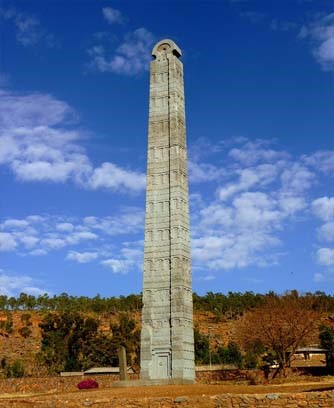
Image Source: wikipedia
Between the 1st and 8th centuries AD, this powerful African kingdom was a major crossroads for trade routes connecting the Mediterranean Sea with the Arabian Peninsula and India. The Aksumites were renowned for their advanced architecture, most famously the towering stelae or obelisks of Axum, intricately carved monuments that still exist today. They developed their own written script, Ge’ez, and were one of the first major civilizations to adopt Christianity, influencing the religious landscape of the region. The reasons for their decline remain debated, but possible factors include a changing climate, conflict with neighboring states, the rise of Islam, and shifts in trade routes.
9. Roanoke Colony
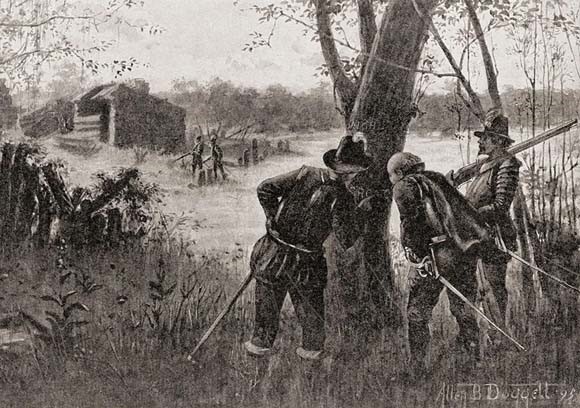
The mysterious disappearance of this English settlement in North America continues to intrigue historians. Founded in 1587, the Roanoke Colony on the coast of what is now North Carolina vanished without a trace by 1590. The only clue left behind was the word “Croatoan” carved on a post, possibly referring to a nearby island where the colonists may have relocated. Theories about their fate range from assimilation with local Native American tribes to attack by hostile forces, or the colony’s collapse due to harsh living conditions or inadequate supplies.
Read More: Unexplained Scientific Phenomena: 15 Mysteries That Defy Logic
10. Vinland
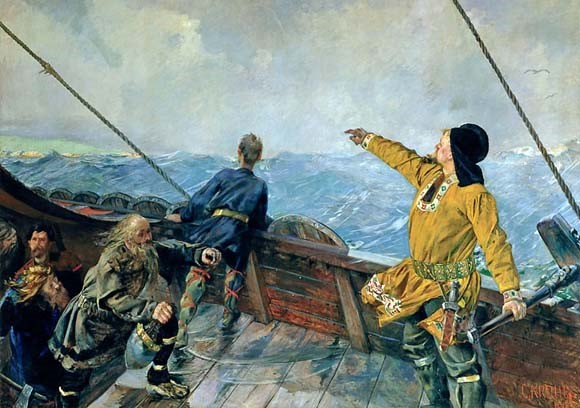
Vinland was a short-lived Norse settlement in North America established around 1000 AD, predating Columbus’s voyages by centuries. Mentioned in Viking sagas, archaeological evidence at the site of L’Anse aux Meadows in Newfoundland, Canada, confirmed the existence of this Norse exploration and settlement. Vinland likely faced tensions with native peoples, and with limited resources, the Norse were unable to sustain a permanent presence in North America, eventually abandoning the settlement.
11. Khmer Empire
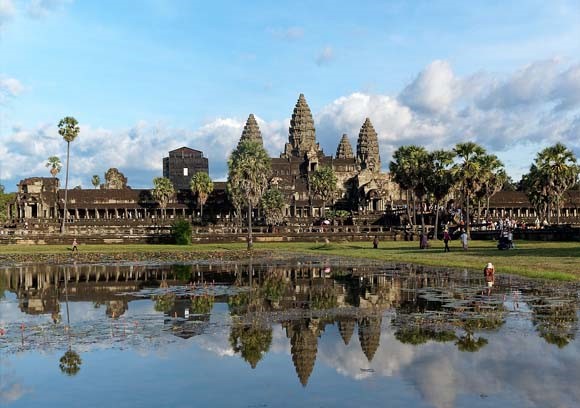
The Khmer Empire dominated Southeast Asia between the 9th and 15th centuries. Their capital, Angkor, stands as a testament to their architectural genius. The sprawling complex of Angkor Wat, with its majestic towers, intricate bas-reliefs, and harmonious design, is a UNESCO World Heritage Site. The Khmers were skilled engineers, creating extensive irrigation systems and vast reservoirs, vital for their agriculture-based society. The reasons for the decline of the Khmer Empire are still debated, but factors like repeated invasions, internal conflict, and possible environmental pressures likely played a role in their eventual fall.
12. Rapa Nui
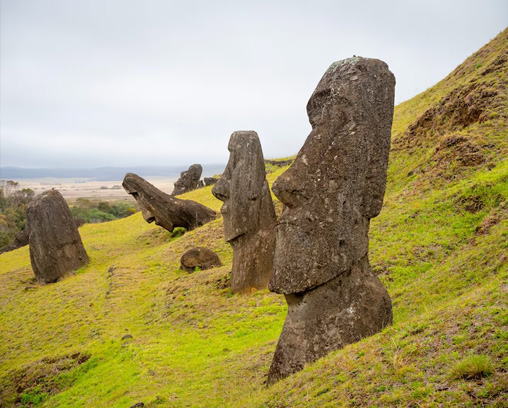
The remote island of Rapa Nui (Easter Island) in the southeastern Pacific Ocean is famous for its enigmatic moai statues – colossal human figures carved from volcanic stone. The Rapa Nui people, Polynesian seafarers who arrived on the island around 1200 AD, crafted and transported these monumental statues across the island, a feat that reflects remarkable engineering skill and social organization. However, scholars believe the Rapa Nui faced ecological challenges, possibly due to overexploitation of natural resources, leading to societal decline. The moai stand as mute witnesses to a once-thriving culture and a cautionary tale about sustainability.
Read More: 15 Spine-Chilling Facts About the World’s Most Infamous Hauntings
13. Thonis-Heracleion
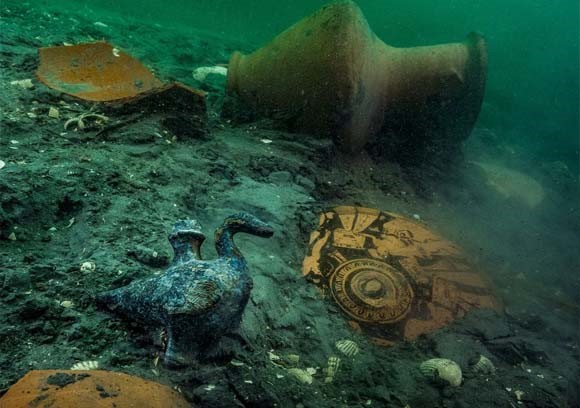
This lost Egyptian city was once a bustling port, controlling trade at the mouth of the Nile River. A combination of earthquakes and rising sea levels led to its submergence over a thousand years ago. Recently rediscovered off the coast of Egypt, Thonis-Heracleion offers an intriguing glimpse into ancient Egyptian society and trade connections. Statues, artifacts, anchors, and the remains of temples have been recovered, painting a picture of a cosmopolitan city deeply connected to the Mediterranean world.
14. Mycenaean Greeks
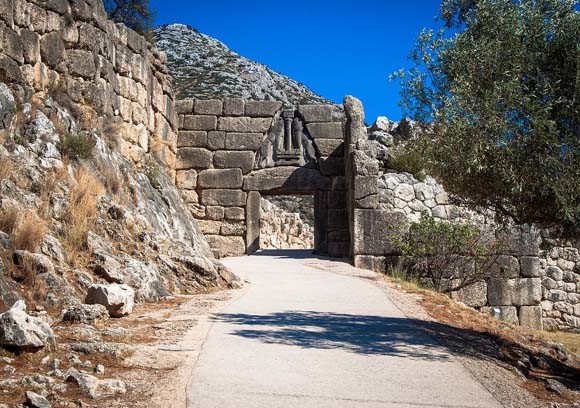
This influential Bronze Age civilization thrived in Greece from around 1600 BC to 1100 BC and formed the backdrop of Homer’s epic poems, the Iliad and Odyssey. The Mycenaeans were skilled warriors, architects, and traders, known for their imposing citadels like Mycenae and Tiryns. Their palaces featured elaborate frescoes, and their tombs yielded intricate gold artifacts, highlighting their wealth and power. The reasons for their downfall are complex, with factors like invasions by foreign powers, internal conflicts, and potential natural disasters contributing to the collapse of the Mycenaean civilization.
15. Dwaraka
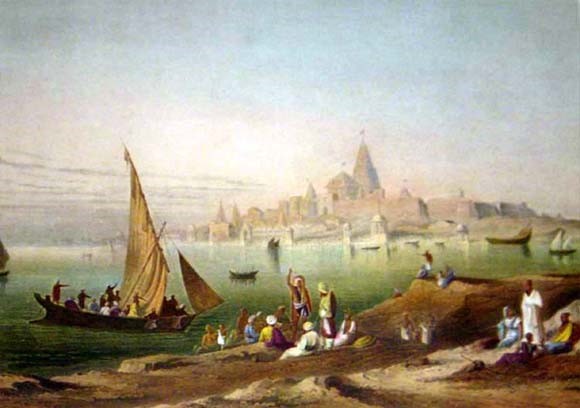
An ancient Indian city mentioned in Hindu sacred texts like the Mahabharata, Dwaraka is believed to be a legendary city that was built by the god Krishna, and subsequently lost to the sea. While there’s ongoing debate among archaeologists about its existence, recent marine archaeological explorations off the coast of Gujarat, India, have revealed the possible presence of submerged structures, fueling discussions about the potential identification of the mythical Dwaraka.
Read More: The 15 Greatest Unsolved Cryptic Puzzles That Will Baffle Your Mind
Conclusion:
The stories of these lost civilizations remind us of the impermanence of even the mightiest societies and the ever-present potential for dramatic change. They spark our curiosity about the mysteries of the past and challenge conventional assumptions about historical timelines and cultural development. As research and technology advance, we may uncover new clues, solve long-standing enigmas, and gain a deeper understanding of the countless civilizations that have shaped human history.
15 FAQs (Frequently Asked Questions)
-
Do any lost civilizations still exist today?
While no known lost civilizations exist entirely in their original form, there may be present-day communities that hold the traditions, beliefs, or even genetic lineages of descendants of these past societies.
-
Is it possible that there are more lost civilizations yet to be discovered?
Absolutely! Technological advances in fields like remote sensing, archaeology, and underwater exploration continuously reveal new hidden sites and forgotten settlements. Vast areas of the Earth remain unexplored, especially in dense jungles, remote deserts, or beneath the oceans.
-
Why do civilizations disappear?
Civilizations decline due to diverse and complex reasons. Common factors include:
1)Natural disasters (earthquakes, volcanic eruptions, floods, droughts)
2)Environmental degradation and resource depletion
3)Warfare and invasions
4)Internal conflicts and social unrest
5)Shifts in trade routes and economic decline
6)Disease and epidemics -
What can we learn from studying lost civilizations?
Lost civilizations offer valuable lessons about human societies, both their achievements and their potential vulnerabilities. They can reveal technological innovation, artistic expression, social structures, and shed light on the factors that contribute to the rise and fall of complex societies. Studying lost civilizations helps us understand the challenges of the past and perhaps gain insights for a more sustainable future.
-
Could Atlantis have been a real place?
While Plato’s story of Atlantis has captured imaginations for centuries, most scholars consider it a myth or allegory rather than based on a real historical place. However, some theories suggest that a cataclysmic event like a volcanic eruption or earthquake may have destroyed an actual advanced island civilization, inspiring the elements and themes found in the story of Atlantis.
-
Could a lost civilization be hiding in plain sight?
It’s possible! Even well-known archaeological sites might hold further secrets, waiting to be revealed with new technologies or different interpretations of existing evidence. Additionally, some lost cultures may have integrated with other societies, leaving traces of their traditions and knowledge that are difficult to untangle over time.
-
Are there lost civilizations mentioned in mythology or folklore that have a basis in reality?
Legends and myths often contain kernels of truth that get embellished over centuries of storytelling. Places or figures mentioned in folklore may have real historical counterparts, perhaps distorted with time but offering clues to ancient societies and events.
-
What is the most recently discovered lost civilization?
The field of archaeology progresses constantly, leading to the regular discovery of sites belonging to previously unknown civilizations. Check out recent news reports about exciting archaeological finds and research projects, which may unveil the most recent discoveries.
-
Are there potential ways to predict or prevent the collapse of modern-day societies by studying lost civilizations?
While history never repeats itself perfectly, studying the patterns that led to the fall of past civilizations can offer valuable warnings for today’s societies. Common pitfalls, like environmental mismanagement, social inequality, overextension of resources, and vulnerability to external threats, might be identified and addressed more proactively through the lens of history.
-
Could advanced technology from lost civilizations still be buried and undiscovered?
It’s possible! Civilizations that were more technologically advanced than currently acknowledged may have left behind artifacts, tools, or structures that we don’t yet understand or which have been misidentified. As archaeological methods improve, surprising discoveries might force us to reconsider the technological sophistication of certain lost societies.
-
What ethical considerations are involved in exploring and excavating lost civilizations?
Excavating sites belonging to lost civilizations raises important ethical concerns, including:
1)Respecting the cultural heritage and significance of those sites, potentially sacred to descendants or existing communities
2)The potential for looting and damage of archaeological sites
3)Consulting with local stakeholders and ensuring that the benefits of any research are equitably shared. -
Are there any fictional works (books, movies, games) that do a great job of portraying lost civilizations?
Many fictional works draw inspiration from the concept of lost civilizations, creating compelling narratives and imaginative settings. Some famous examples include:
1)The Indiana Jones franchise of movies
2)H. Rider Haggard’s novels featuring characters like Allan Quatermain and “She”
3)Video games like the Uncharted series or Tomb Raider -
How can I get involved in learning more about lost civilizations or even participate in archaeological research?
There are many ways to delve deeper into lost civilizations:
1)Take courses in history, archaeology, or anthropology.
2)Visit museums with exhibits on ancient civilizations.
3)Read books and articles by reputable historians and archaeologists.
4)Consider volunteering at local archaeological projects or research organizations.
5)Join online communities and forums dedicated to the study of lost civilizations. -
What are some famous hoaxes or misidentifications related to lost civilizations?
The allure of lost civilizations has sometimes led to hoaxes or misinterpretations. Examples include:
1)The Piltdown Man skull, a fabricated fossil intended to fool scientists about human origins
2)Misattributing megalithic structures to lost civilizations, when more recent cultures may have built them
3)Exaggerated interpretations of ruins or artifacts that lack adequate scientific evidence. -
Where can I find reliable sources of information on lost civilizations?
Focus on credible sources when learning about lost civilizations. These include:
1)Publications by university presses or established archaeological journals
2)Websites of museums and reputable archaeological organizations
3)Well-researched documentaries by organizations like the BBC or PBS.

